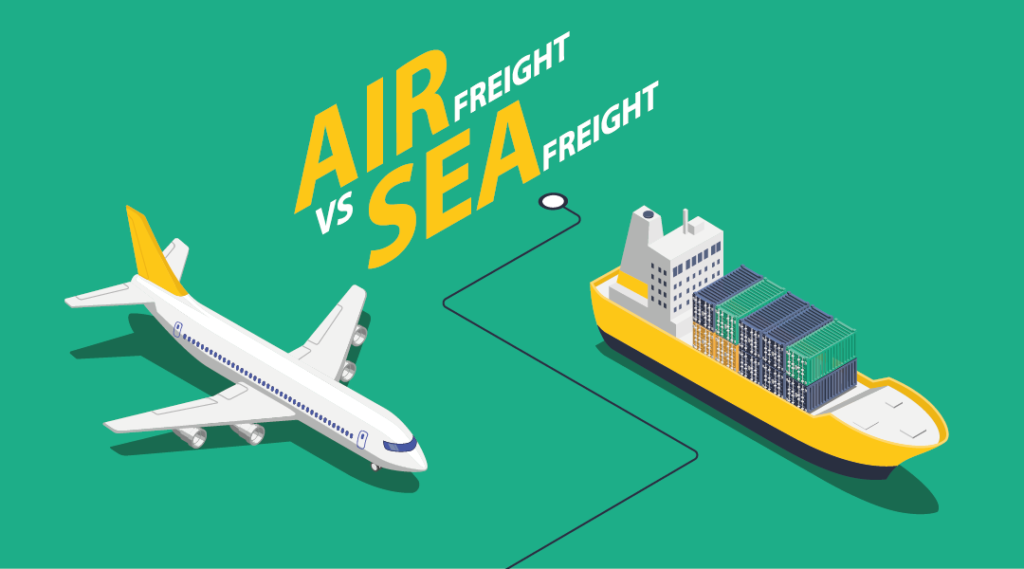The Agent’s Guide to Air vs. Sea Freight in 2025
As global sourcing becomes faster and more complex, the debate between air freight and sea freight has gained renewed relevance in 2025. Sourcing agents, manufacturers, and logistics managers must evaluate trade-offs between cost, speed, reliability, and environmental impact to determine the most suitable option for each shipment.
For businesses relying on timely and cost-effective product delivery, working with a bestsourcing product agent is more crucial than ever. These professionals help clients align freight decisions with business goals while navigating geopolitical and supply chain volatility.
Air Freight: Speed and Agility at a Premium
1. Transit Time
In 2025, air freight remains the fastest option, offering transit times as short as 1–5 days depending on the origin and destination. This is especially valuable for just-in-time (JIT) supply chains, product launches, or perishable goods.
For startups in the electronics and fashion space, time-to-market can make or break a quarter. In these cases, a bestsourcing agent asia may recommend air freight to maintain momentum and meet demand peaks.
2. Cost Structure
Air freight costs in 2025 are approximately 5–8 times higher than sea freight, although recent fuel efficiency innovations have slightly narrowed the gap. Charges are often based on dimensional weight, making it less favorable for bulky, low-value products.
When working with a sourcing partner, clear product categorization and forecasting help determine if the higher cost is justified by the return on investment.
Sea Freight: Economical, Scalable, but Slower
1. Volume Handling
Sea freight is unbeatable when it comes to transporting large volumes of goods. Whether it’s full container load (FCL) or less-than-container load (LCL), it offers scalability for seasonal orders, bulk commodities, or heavy equipment.
A reliable bestsourcing product agent can consolidate shipments from multiple suppliers, maximizing container space and lowering overall shipping expenses.
2. Transit Delays in 2025
While sea freight generally takes 20–40 days, global trade routes have seen disruption due to port congestion, environmental regulation zones, and political instability. However, shipping agents have adapted by offering multimodal solutions and rerouting options through secondary ports.
Choosing a bestsourcing agent asia ensures these rerouting capabilities are handled without compromising customer timelines.
Comparing Costs in 2025: More Than Freight Charges
Choosing between air and sea is not just a cost-per-kilogram calculation. Considerations include:
- Storage Fees: Air shipments might require less warehousing, reducing holding costs.
- Duty and Tax Exposure: Air freight may result in different tariffs and insurance needs.
- Carbon Footprint: Sea freight is still more eco-friendly, aligning better with ESG goals.
An experienced bestsourcing product agent helps you forecast not just transit costs, but total landed costs — a key KPI for sustainable supply chains.
2025 Trends Influencing Freight Decisions
1. Rising E-commerce Demands
B2C brands increasingly opt for hybrid shipping. They might send a bulk of inventory via ocean and replenish high-demand items using express air services. This dual approach is often coordinated by sourcing professionals for optimal coverage.
2. AI-Driven Route Optimization
Advanced freight software can now predict delays based on historical and real-time data. Sourcing agents equipped with these tools can advise clients whether to switch modes dynamically during the logistics process.
Having a bestsourcing agent asia familiar with AI-based planning ensures decisions are proactive, not reactive.
3. Regional Manufacturing Hubs
With more companies shifting production to Southeast Asia, particularly Vietnam, Indonesia, and India, sea lanes are adapting. Lead times are changing, and port infrastructure upgrades are affecting overall shipment reliability.
Airports in key Asian hubs are also seeing increased cargo traffic, especially for tech and apparel sectors. Your agent’s ability to leverage new shipping nodes can dramatically influence fulfillment timelines.
When Should You Choose Air Freight?
- Product has a short shelf life or fast-moving trend (e.g., electronics, holiday items).
- High-value products with strong profit margins.
- Market entry deadlines or stockout prevention requires urgency.
- Shipping to remote or underserved areas where sea freight isn’t viable.
When Is Sea Freight the Better Option?
- Products are large volume or high weight (e.g., furniture, machinery).
- There is price sensitivity and long-term stock planning.
- Sufficient lead time is available for delivery.
- Sustainability goals encourage low-emission shipping options.
By working with a capable bestsourcing product agent, you can build flexible strategies that combine air and sea for different SKU categories or sales channels.
Final Thoughts: Flexibility Is Key in 2025
There is no one-size-fits-all answer in the air vs. sea freight debate. The right choice depends on your product category, customer expectations, budget, and time constraints.
In 2025, the most successful brands are those that adapt. They rely on a trusted bestsourcing agent asia to evaluate freight options in real-time and pivot when supply chain conditions change.
With the right expertise guiding these decisions, businesses not only mitigate risks but also seize new market opportunities — faster, smarter, and more profitably.
